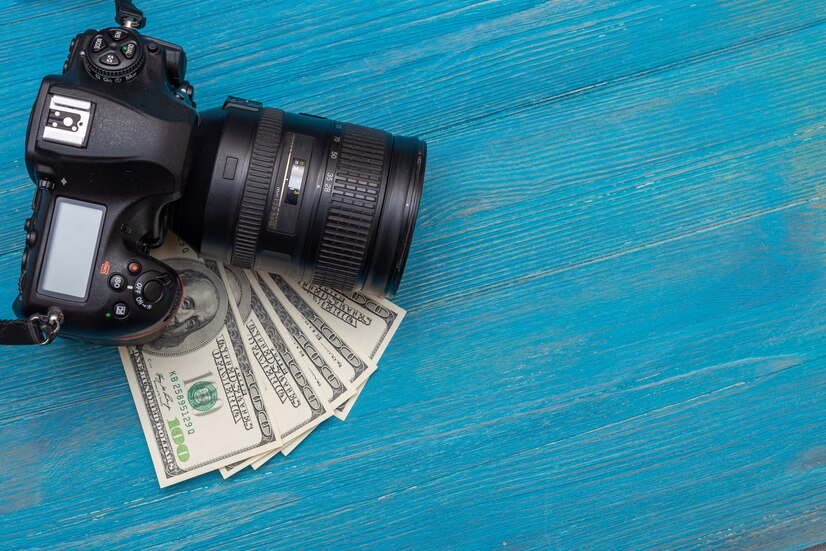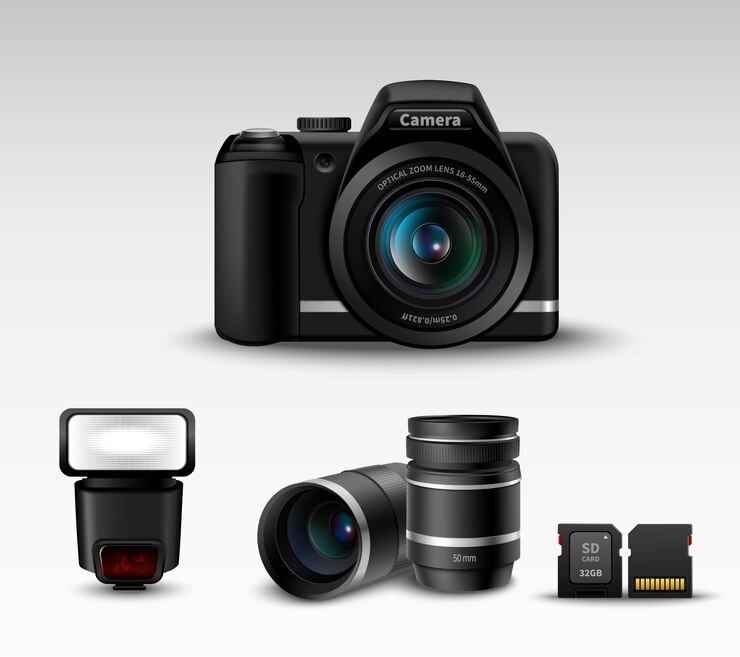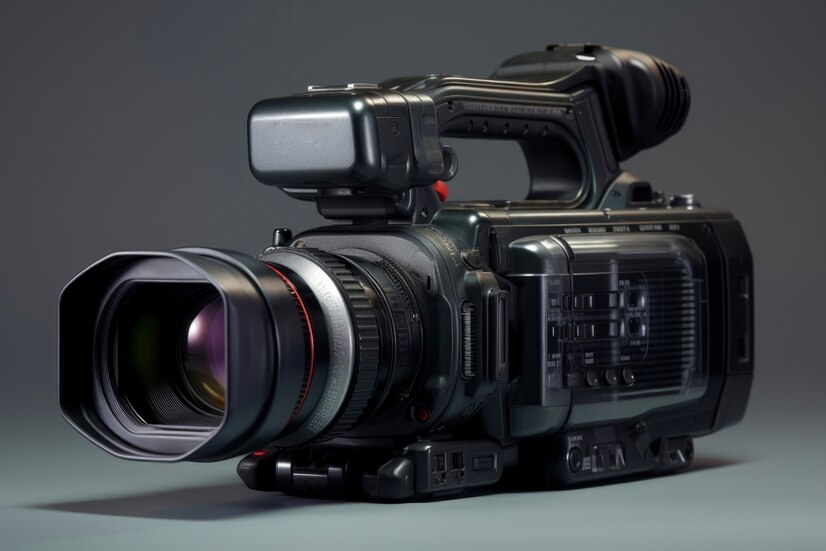GST Rate for Digital Cameras and Cameras
- 20 Aug 24
- 9 mins

GST Rate for Digital Cameras and Cameras
Key Takeaway
- Digital cameras, including various types and accessories, generally attract a GST rate of 18%.
- Traditional film cameras, such as manual film cameras and instant print cameras, also fall under the 18% GST rate.
- Using the correct HSN Codes, such as 8525 for digital cameras and 9006 for film cameras, ensures the appropriate GST rate is applied.
- Businesses can leverage input tax credits to offset the GST paid on input services and supply services against their GST liability on sales.
Introduction to GST on Digital Cameras and normal Cameras
Goods and Services Tax (GST) is a broad, multi-stage, destination-based tax that is added to everything that has worth. Indian indirect taxes have been made easier to understand by combining different state and federal taxes into one tax system. The prices and taxes of many goods and services, like digital and traditional cameras, have changed a lot because of this shift.
Digital cameras and cameras used for work or pleasure are taxed at different rates that affect how much they cost all together. In this group are many different kinds of devices, like digital cameras, video camera recorders, TV cameras, sound recorders, photographic flashlights, and special cameras like quick print cameras. Every one of these things has its own HSN (Harmonized System of Nomenclature) Code, which helps you figure out the right GST rate for them.

It is important for consumers, businesses, and other taxable people who sell, buy, or make these items to know the GST rates for them. How much people end up paying and how much a business makes are both affected by the relevant such rates. Businesses can also get input tax credits, which let them deduct the GST they paid on supply and input services from the GST they have to pay on sales. This system helps lower the total amount of taxes that businesses have to pay.
Current GST Rates for Digital Cameras
Digital cameras are indispensable tools for both professional photographers and everyday consumers. Under India's Goods and Services Tax (GST) regime, certain cameras are subject to various tax rates, which affect their ultimate retail costs. Understanding these prices is critical for consumers, businesses, and everyone engaged in the selling or purchase of digital cameras.
GST rates that are applicable
Digital cameras, including various types and accessories, are normally subject to an 18% GST charge. This standard rate applies to a wide variety of digital photographic cameras, ensuring tax consistency.
Breakdown by Category
Here are some specific categories of digital cameras and their respective GST rates:
Digital Still Cameras: These include both standard point-and-shoot cameras and professional DSLR (Digital Single-Lens Reflex) cameras used for still photography. Both fall under the 18% GST rate.

Video camera recorders, including professional camcorders and consumer-grade video cameras, are subject to an 18% GST charge.
Television Cameras: Cameras used in broadcasting and television production are subject to 18% GST. This category contains a variety of models intended for studio and outdoor broadcasts.
Sound Recording Equipment: While primarily utilized for audio, sound recording equipment that frequently accompanies video production is subject to the 18% GST rate when supplied as part of a camera package.
Photographic Flashlight Apparatus: Accessories such as external flashes and studio lighting equipment, which are required for high-quality photography, are taxed at 18%.
Special Cameras: Instant print cameras and other special forms of digital cameras are subject to the same 18% GST rate, guaranteeing consistency among photographic devices.
Importance of HSN Codes
HSN (Harmonized System of Nomenclature) Codes are important in establishing the applicable GST rates. Each type of digital camera and related accessory is granted a unique HSN Code, which aids in properly categorizing the goods for tax purposes. For example:
Digital Still Cameras: HSN Code 8525
Video camera recorders: HSN codes for television cameras, sound recording equipment, and photographic flashlights are 8525, 8518, and 9006 respectively.
Using the proper HSN Code ensures that the correct GST rate is applied, minimizing any potential issues during tax filing.
Impact on Pricing
The 18% GST rate is added to the base price of digital cameras, which affects the final cost to the user. This rate influences businesses' pricing strategy and profit margins. Businesses can, however, use the input tax credit mechanism, which allows them to offset the GST paid on input services (such as manufacturing and supply services) against the GST earned on sales. This helps to lower the total tax liability.
GST Rates for Traditional Film Cameras

Traditional film cameras, once the foundation of photography, continue to have a devoted following among amateurs and professionals who value the unique characteristics of film photography. Under India's Goods and Services Tax (GST) regime, classic film cameras and their accessories are subject to specific GST rates, which affect their entire cost and market dynamics.
GST rates that are applicable
Traditional film cameras, including various types and accessories, are normally subject to an 18% GST charge. This standard rate applies to a wide range of photographic equipment, ensuring that taxes are applied consistently.
Breakdown by Category
Here are some specific categories of conventional film cameras and their respective GST rates:
Manual Film Cameras: These are the traditional cameras that use film rolls to capture photos. 35mm cameras, medium format cameras, and large format cameras are all subject to the 18% GST rate.
Instant Print Cameras: Cameras that generate instant prints, such as the legendary Polaroid cameras, are also subject to an 18% GST rate. These cameras are popular because they can provide immediate tangible photos.
Photographic Flashlight Apparatus: Accessories such as external flashes and lighting equipment for film cameras are taxed at 18%, much as their digital counterparts.
Special Film Cameras: This category covers specialist cameras like as underwater film cameras, panoramic film cameras, and other unusual types of photographic equipment, all of which are subject to an 18% GST rate.
Analog sound recording equipment, which may be used in conjunction with classic film cameras, is likewise subject to an 18% tax.
Importance of HSN Codes
HSN (Harmonized System of Nomenclature) codes are crucial for categorizing classic film cameras and ensuring that GST rates are applied correctly. Each type of film camera and associated accessory is allocated a unique HSN Code, which facilitates in tax compliance and accurate filing. For example:
HSN codes for manual film cameras, instant print cameras, photographic flashlights, and sound recording equipment are: 9006, 9006, and 8518, respectively.
Using the proper HSN Code ensures that the correct GST rate is applied, which prevents potential problems during tax assessments.
Impact on Pricing
The 18% GST rate is applied to the basic price of classic film cameras, which can have a substantial impact on consumers' ultimate costs. For enterprises, the rate has an impact on pricing strategies and profit margins. Businesses can, however, profit from the input tax credit system, which allows them to offset the GST paid on input and supply services against the GST earned on sales. How to Calculate GST on Camera Purchases
Calculating GST on camera purchases is a straightforward process that involves understanding the applicable GST rate, identifying the original price of the camera, and applying the correct formulas. This ensures that you can determine the total cost, including GST, accurately. Here’s a step-by-step guide on how to calculate GST on camera purchases:
Step 1: Determine the Original Price: The first step in calculating GST is to determine the original price of the camera. This is the price before any taxes are applied. For instance, if you are purchasing a digital camera, the original price is the base amount listed by the seller.
Step 2: Identify the Applicable GST Rate: Next, you need to identify the applicable GST rate for the type of camera you are purchasing. In India, digital cameras, traditional film cameras, and related photographic equipment generally attract a GST rate of 18%.
Step 3: Calculate the GST Amount: Once you have the original price and the GST rate, you can calculate the GST amount. This is done by multiplying the original price by the GST rate. The formula is:
GST Amount=Original Price×(GST Rate100)GST Amount=Original Price×(100GST Rate)
💡If you want to pay your GST with Credit Card, then download Pice Business Payment App. Pice is the one stop app for all paying all your business expenses.
For example, if the original price of a digital camera is ₹50,000 and the GST rate is 18%, the calculation would be:
GST Amount=50,000×(18100)=50,000×0.18=9,000
Step 4: Determine the Total Cost
To find the total cost of the camera including GST, you need to add the GST amount to the original price. The formula is:
Total Cost=Original Price+GST AmountTotal Cost=Original Price+GST Amount
Using the previous example:
Total Cost=50,000+9,000=59,000Total Cost=50,000+9,000=59,000
Example Calculation
Let's consider another example with different values:
Original Price of the camera: ₹30,000
GST Rate: 18%
Calculate the GST Amount:
GST Amount=30,000×0.18=5,400GST Amount=30,000×0.18=5,400
Calculate the Total Cost:
Total Cost=30,000+5,400=35,400Total Cost=30,000+5,400=35,400
Tips for Buying Cameras with GST Considerations

HSN Codes: Ensure that the camera and its accessories are classified under the correct HSN Code to apply the appropriate GST rate.
Input Tax Credit: If you are a registered business, you can claim input tax credit on the GST paid for business purchases, which can be offset against your GST liability on sales.
Inter-state vs Intra-state Purchases: For inter-state purchases, Integrated GST (IGST) is applicable, while for intra-state purchases, Central GST (CGST) and State GST (SGST) are applicable, both usually adding up to the total GST rate.
 By
By 

















